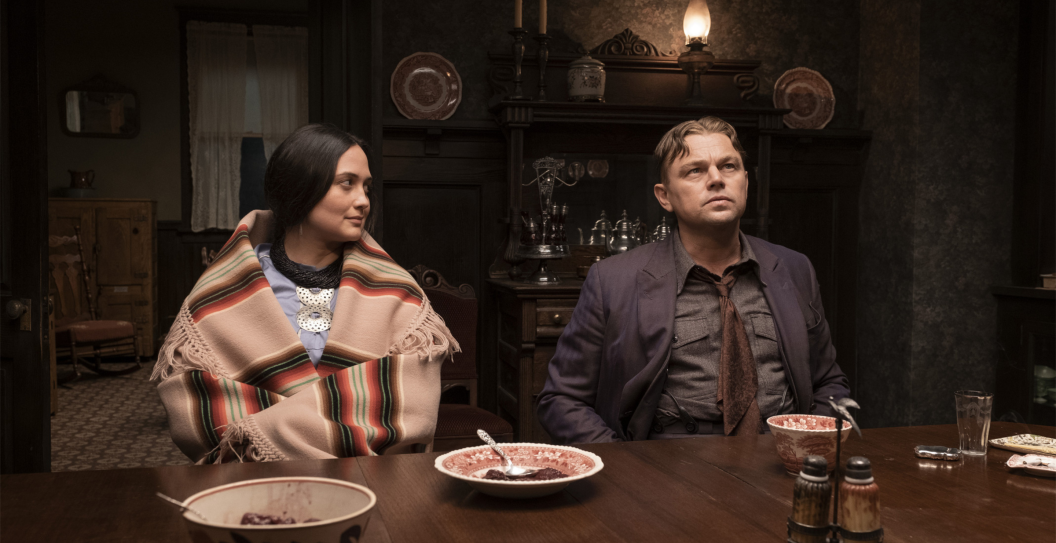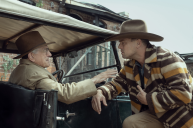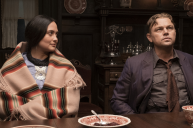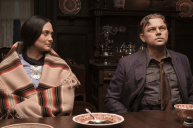"Killers of the Flower Moon" is a gorgeous, brutal period piece that keeps you enthralled throughout its lengthy runtime. It boasts fantastic performances and shines a spotlight on a true and lesser-known tragedy suffered by the Osage tribe. It forces us to contend with America's ugly history. And it has been praised for its accurate and fastidious attention to detail in its portrayal of Osage culture. So why does the film feel like a disservice to the Osage people?
Videos by Wide Open Country
The Martin Scorcese film, which is up for 10 Academy Awards, including Best Picture, Best Director and Best Actress for Lily Gladstone, is based on the 2017 true crime book "Killers of the Flower Moon: the Osage Murders and the Birth of the FBI" by David Grann. The film follows Ernest Burkhart (Leonardo DiCaprio), a rather dimwitted veteran (his slack-jawedness is highlighted with fake teeth that give DiCaprio a severe underbite) who goes to live with his uncle in Oklahoma after World War I. He takes a job as a cab driver and frequently picks up an Osage woman named Mollie (Gladstone). He then learns from his uncle William Hale (Robert DeNiro) that if he marries an Osage woman, he gets her "headrights" -- her stake in the vast oil fortune amassed by the Osage tribe. At the encouragement of Hale, Ernest pursues Mollie. The two fall in love and marry.
Then the murders start.
Warning, spoilers ahead for 'KIllers of the Flower Moon.'
Full-Blood
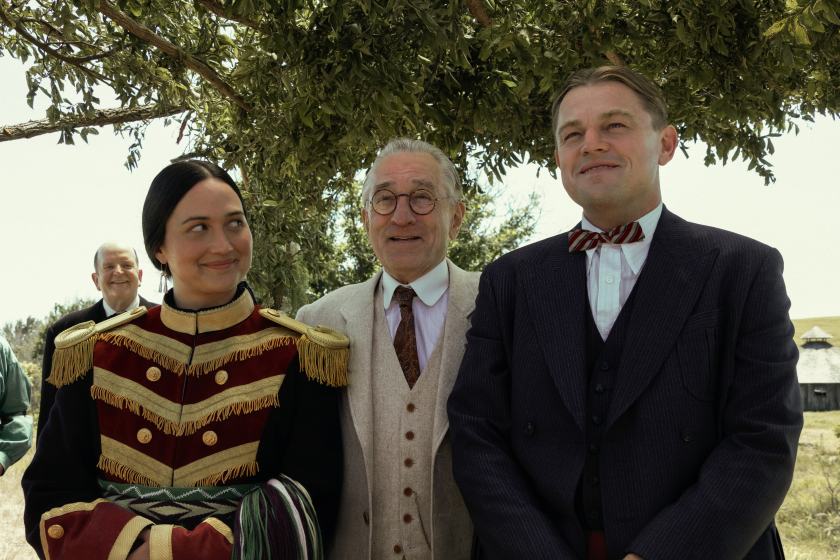
Apple TV+
We're introduced to the film's unique setting through an expertly composed shot at the train station. White men, slick with sweat and dirt, brawl on the platform. Meanwhile, the Osage, donning expensive clothes and jewelry, are helped out of their fancy cars by white chauffeurs. It's clear who runs this town. But the whites are determined to get their piece of the pie — Hale and Burkhart aren't the only ones with a plan to marry into Osage wealth.
Left and right, white men vie for Osage brides. One shows off his wife to Burkhart, bragging that she's "full blood." The Osage have a major target on their backs. Not only because of their wealth but because of how quickly it flows to their spouses: diabetes runs rampant through the tribe and few live past 50. When they die, that money goes to the husband. But as more white men marry into the tribe — and more hands reach into the pot — men like Hale and Ernest decide to speed up that transfer of wealth, eliminating competition in the process. The Osage are massacred one by one. The authorities, who are in on the racket, do nothing. And here, Scorcese — who's never shied away from violence — expertly crafts a montage of death that makes the heart bleed for the Osage and deeply resent their treatment.
It sounds like a departure for Scorcese at first glance. In many regards, it is. The Scorcese film we've come to know is characterized by fast-talking gangsters quick on the draw and quick to run their mouths. But in "Killers of the Flower Moon," Scorcese is unafraid to let moments linger in silence. While Ernest romances Mollie, a sweet moment sees her shushing him to be quiet, to simply be, as rain pours outside — an Osage tradition of respect for the storm. I can't help but think of Scorcese as Ernest in that moment. Scorcese had originally completed a script for "Killers" in 2019. But after visiting the Osage tribe with Gladstone and DiCaprio, he threw it out and started over, incorporating Osage consultants in the rewrite. He was the fast-talking white man, eager to fill every space with words, until the Osage taught him to slow down.
Indeed, Scorcese tried his darndest to make the most authentic and respectful film possible for the Osage. And he almost succeeded.
Should Scorcese Have Directed the Film?
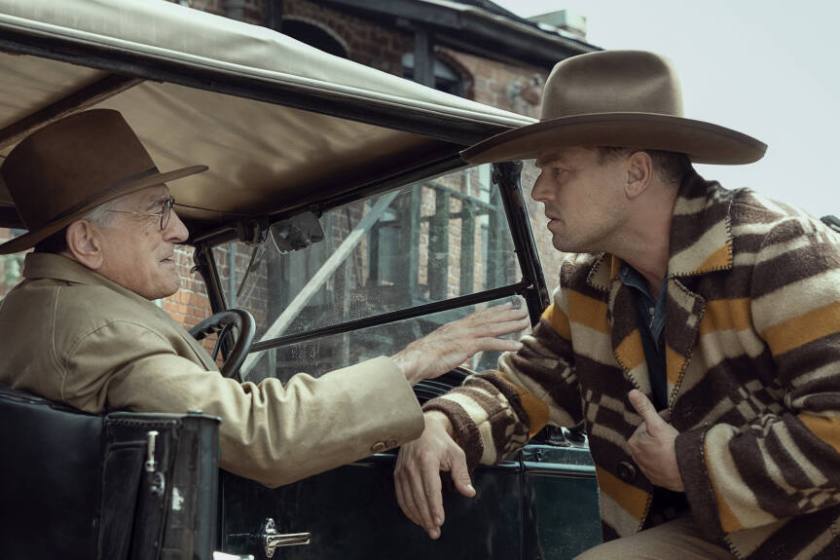
Apple TV+
"Killers" is very much a Scorcese film. Which, in this case, is both a good and bad thing.
The writing, direction, cinematography, performances — all of these things are masterful. The 81-year-old Scorcese is still at the top of his game. But being a Scorcese film, the focus is pulled toward the Scorcese-esque elements: the grand conspiracy of the gangster-like Hale to sick hitmen on the Osage; the cunning work of the FBI to catch him. This classic cops versus mobsters story takes center stage. But Scorcese's goal was to make a film about the resilience of Indigenous people. Instead, Native Americans are often relegated to the background, which undermines Scorcese's intentions. And when they are on screen, they are portrayed largely as helpless victims.
The thing is, Scorcese could have retained all the trappings of a Scorcese epic while still placing Osage resilience at the fore — it's a painfully missed opportunity. John Wren (Tatanka Means) was one of the few Native American members of the FBI. He went undercover in Oklahoma as a medicine man and was vital in the FBI's work to solve the murders. Wren, who was part Ute, was the only Indigenous man on the case. This meant that the Osage tribe opened up to him more than any other agent. Unfortunately, Wren is given precious little screen time. Mollie also fought fiercely to save her people. Despite being close to death with diabetes, she makes a trip to DC and speaks directly with President Hoover, convincing him to send help. She succeeds. But this, too, is afforded only a passing glance.
There's no denying all the good that has come from "Killers of the Flower Moon." It placed the atrocities committed against the Osage — and Indigenous people in general — into the zeitgeist, renewing important conversations about colonization. And it gave Gladstone a Best Actress nomination, making her the first Native American in history to achieve such a feat. Further, the success of the film has shown that the world craves authentic stories about Indigenous people. I just hope this will translate to more stories from Indigenous people — the countless Indigenous filmmakers who could have created a version of "Killers" informed by lived personal experience.
Scorcese admirably tries to reckon his place in telling the Osage story. At the end of the film, we see white people reading about the murders for a live audience. The hokey true crime performance is complete with a white man doing an offensive impersonation of an Indigenous man. Scorcese even acts in the scene, stepping on stage to reveal what happened to Mollie — namely, her death, and the subsequent obituary, which didn't even mention the murders. Here, Scorcese gets meta, conceding that he, in a sense, is exploiting the Osage by telling their story for them. But for all this apologizing, he directed the film anyway. Like the rest of the film, he gets so close to the point without reaching it.
